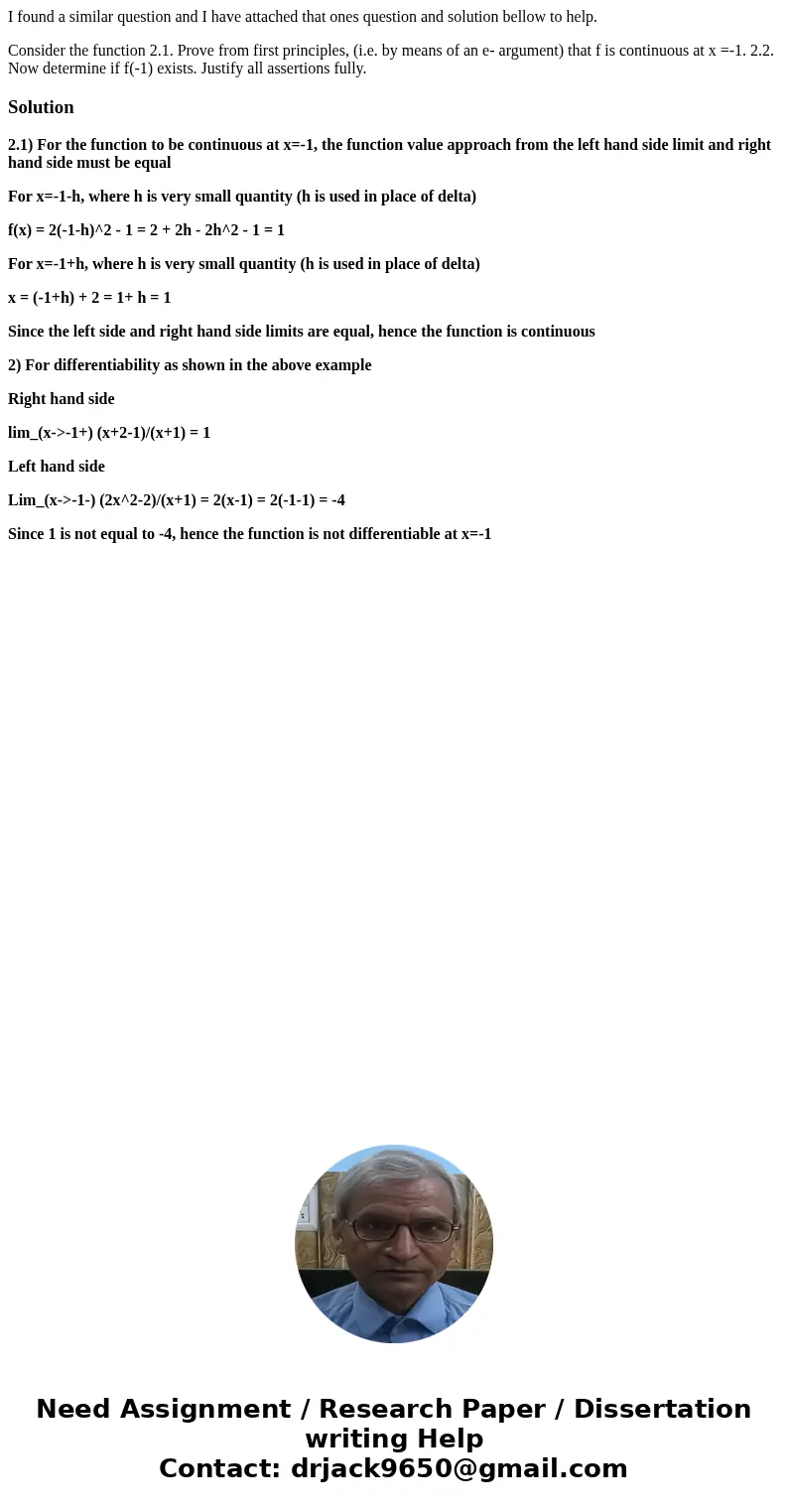I found a similar question and I have attached that ones que
I found a similar question and I have attached that ones question and solution bellow to help.
Consider the function 2.1. Prove from first principles, (i.e. by means of an e- argument) that f is continuous at x =-1. 2.2. Now determine if f(-1) exists. Justify all assertions fully.Solution
2.1) For the function to be continuous at x=-1, the function value approach from the left hand side limit and right hand side must be equal
For x=-1-h, where h is very small quantity (h is used in place of delta)
f(x) = 2(-1-h)^2 - 1 = 2 + 2h - 2h^2 - 1 = 1
For x=-1+h, where h is very small quantity (h is used in place of delta)
x = (-1+h) + 2 = 1+ h = 1
Since the left side and right hand side limits are equal, hence the function is continuous
2) For differentiability as shown in the above example
Right hand side
lim_(x->-1+) (x+2-1)/(x+1) = 1
Left hand side
Lim_(x->-1-) (2x^2-2)/(x+1) = 2(x-1) = 2(-1-1) = -4
Since 1 is not equal to -4, hence the function is not differentiable at x=-1

 Homework Sourse
Homework Sourse